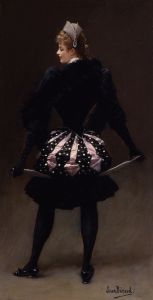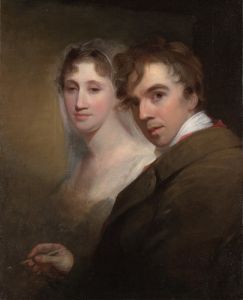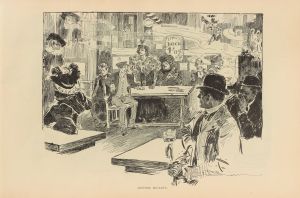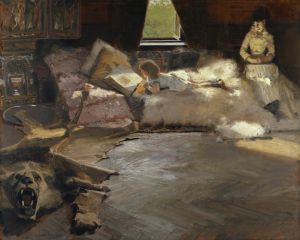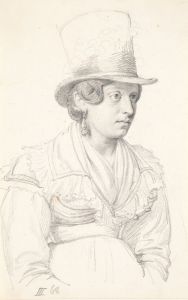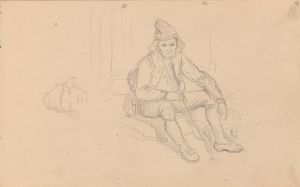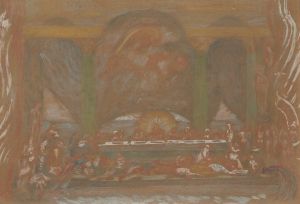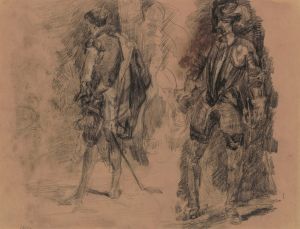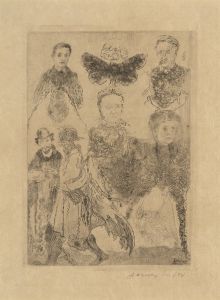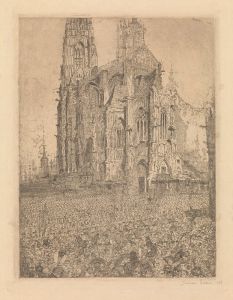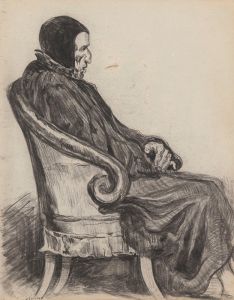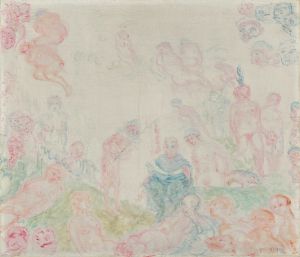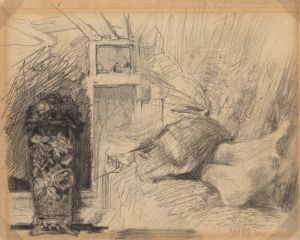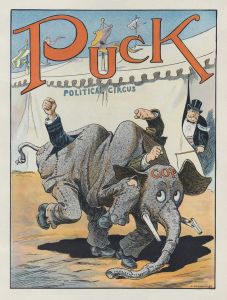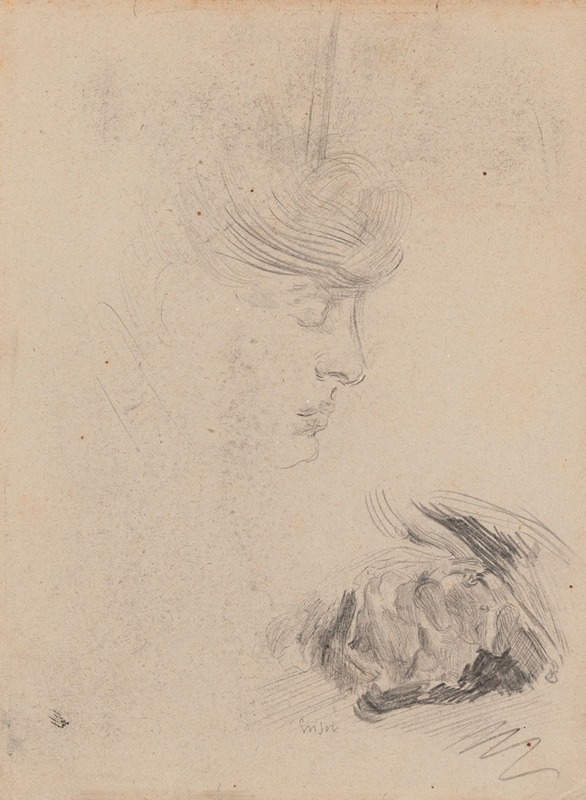
The artist’s Sister Mitche and Figure
A hand-painted replica of James Ensor’s masterpiece The artist’s Sister Mitche and Figure, meticulously crafted by professional artists to capture the true essence of the original. Each piece is created with museum-quality canvas and rare mineral pigments, carefully painted by experienced artists with delicate brushstrokes and rich, layered colors to perfectly recreate the texture of the original artwork. Unlike machine-printed reproductions, this hand-painted version brings the painting to life, infused with the artist’s emotions and skill in every stroke. Whether for personal collection or home decoration, it instantly elevates the artistic atmosphere of any space.
James Ensor, a prominent Belgian painter and printmaker, is known for his unique and often surreal style that blends elements of symbolism and expressionism. One of his notable works is "The Artist's Sister Mitche and Figure," which reflects his distinctive approach to art and his fascination with the grotesque and the fantastical.
James Ensor was born on April 13, 1860, in Ostend, Belgium, and spent much of his life there. He was a key figure in the Belgian avant-garde movement and played a significant role in the development of modern art in Europe. Ensor's work is characterized by its bold use of color, intricate detail, and a penchant for the bizarre and the macabre.
"The Artist's Sister Mitche and Figure" is a painting that exemplifies Ensor's style and thematic interests. While specific details about the creation and history of this particular painting are limited, it is consistent with Ensor's broader body of work, which often includes depictions of masks, skeletons, and fantastical figures. These elements are used to explore themes of identity, mortality, and the human condition.
Ensor's sister, Mitche, appears in several of his works, indicating her importance in his life and art. The inclusion of family members in his paintings suggests a personal dimension to his work, where he often blurs the line between reality and imagination. The "figure" in the painting likely refers to one of the many fantastical or symbolic characters that populate Ensor's art, serving as a vehicle for his exploration of deeper philosophical and existential themes.
Ensor's work was initially met with resistance and criticism due to its unconventional style and subject matter. However, over time, he gained recognition and acclaim for his innovative approach and his ability to capture the complexities of human experience. His influence can be seen in the works of later artists, including the German Expressionists and the Surrealists, who admired his bold use of color and his willingness to confront the darker aspects of life.
"The Artist's Sister Mitche and Figure" is a testament to Ensor's artistic vision and his ability to blend the real with the imaginary. It reflects his fascination with the theatrical and the grotesque, as well as his interest in exploring the boundaries of human perception and understanding. Through his art, Ensor invites viewers to question their own perceptions of reality and to consider the deeper, often hidden, aspects of existence.
Today, James Ensor is celebrated as one of Belgium's most important artists, and his works are held in major museums and collections around the world. "The Artist's Sister Mitche and Figure," like many of his paintings, continues to captivate audiences with its enigmatic imagery and its ability to evoke a wide range of emotions and interpretations.





